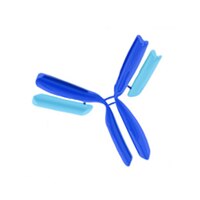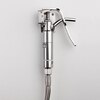Oct4A is expressed by a subpopulation of prostate neuroendocrine cells.
Sotomayor, P; Godoy, A; Smith, GJ; Huss, WJ
The Prostate
69
401-10
2009
Mostrar resumen
Cancer stem cells are defined by their self-renewal and multi-potential capabilities and are hypothesized to be the source of primary and recurrent cancers. The stem cell properties of self-renewal and pluripotency in embryonic stem cells and germ cells are regulated by Oct4A, a splice variant of the POU5F1 (Oct3/4) gene, while the function of the alternative splice variant, Oct4B, is unknown. Rare cells that express Oct4 were identified in several somatic cancers, however, the differential contributions of the Oct4A and Oct4B variants were not determined.Oct4A expression and co-localization with lineage markers was performed with PCR and immunohistochemistry.Rare Oct4A expressing cells are present in human benign and malignant prostate glands and the number of Oct4A expressing cells increases in prostate cancers with high Gleason scores. Oct4A expressing cells were non-proliferative, and did not co-express markers of basal epithelial cell or luminal epithelial cell differentiation, or AMACR, a marker of prostate cancer epithelial cells. A subpopulation of the Oct4A expressing cells co-expressed Sox2, an embryonic stem cell marker, but did not express other putative stem cell markers, such as ABCG2, NANOG or CD133. The majority of Oct4A expressing cells co-expressed chromogranin A, and a subset of Oct4A expressing cells co-expressed synaptophysin, both markers of neuroendocrine differentiation.The increased number of cells that expressed Oct4A in prostate cancer compared to benign prostate, and in cancers of increasing grade, suggests that Oct4A/Chromogranin A co-expressing cells represent neuroendocrine cells in prostate cancer. Artículo Texto completo | 19058139
 |
Simultaneous cell death and desquamation of the embryonic diffusion barrier during epidermal development.
Manuela Saathoff, Barbara Blum, Thomas Quast, Gregor Kirfel, Volker Herzog
Experimental cell research
299
415-26
2004
Mostrar resumen
The periderm is an epithelial layer covering the emerging epidermis in early embryogenesis of vertebrates. In the chicken embryo, an additional cellular layer, the subperiderm, occurs at later embryonic stages underneath the periderm. The questions arose what is the function of both epithelial layers and, as they are transitory structures, by which mechanism are they removed. By immunocytochemistry, the tight junction (TJ) proteins occludin and claudin-1 were localized in the periderm and in the subperiderm, and sites of close contact between adjacent cells were detected by electron microscopy. Using horseradish peroxidase (HRP) as tracer, these contacts were identified as tight junctions involved in the formation of the embryonic diffusion barrier. This barrier was lost by desquamation at the end of the embryonic period, when the cornified envelope of the emerging epidermis was formed. By TUNEL and DNA ladder assays, we detected simultaneous cell death in the periderm and the subperiderm shortly before hatching. The absence of caspases-3, -6, and -7 activity, key enzymes of apoptosis, and the lack of typical morphological criteria of apoptosis such as cell fragmentation or membrane blebbing point to a special form of programmed cell death (PCD) leading to the desquamation of the embryonic diffusion barrier. | 15350540
 |
Development of a novel monoclonal antibody recognizing basal cells of human squamous epithelia.
Jiro Hitomi, Fumio Ishizaki, Eiji Kimura, Nobuyuki Sato
Archives of histology and cytology
65
201-8
2002
Mostrar resumen
The basal layer of the epithelium is usually thought to contain stem or progenitor cell populations. In order to analyze its biological characteristics, we attempted to produce novel monoclonal antibodies recognizing basal cells of the human esophageal epithelium. Hybridomas were generated from fusions between spleen cells of ddY mice immunized with esophageal epithelial cells (EECs) cultured at low calcium concentrations. A clone, NJ-E-H10, producing a monoclonal antibody (moAb) reacting with basal cells of human esophageal epithelia, was selected for its staining pattern on frozen sections of the epithelia. The immunoreactivities of NJ-E-H10 were detected in the cytoplasm of basal cells predominantly located in the interpapillary zones of the epithelia. In the primary culture of EECs, immunoreactive cells were present at the marginal area of the growing colonies, where EECs extend their cytoplasm and migrate out of the colonies. Immunoelectron microscopy demonstrated the immunoreactivities of the moAb NJ-E-H10 around the intermediate filaments of basal cells, but not on the filaments themselves. In the human skin, NJ-E-H10 positive cells were also observed in the basal layer of the epidermis as well as in keratinocytes in the outer layer of the outer root sheath in hair follicles and myoepitheial cells in the sweat glands. Since the distribution of NJ-E-H10 immunoreactivities differs from that reported by hitherto-known antibodies, the MoAb NJ-E-H10 is considered a new marker for clarifing the biological properties of the basal cell compartment in stratified epithelia. | 12164343
 |
















